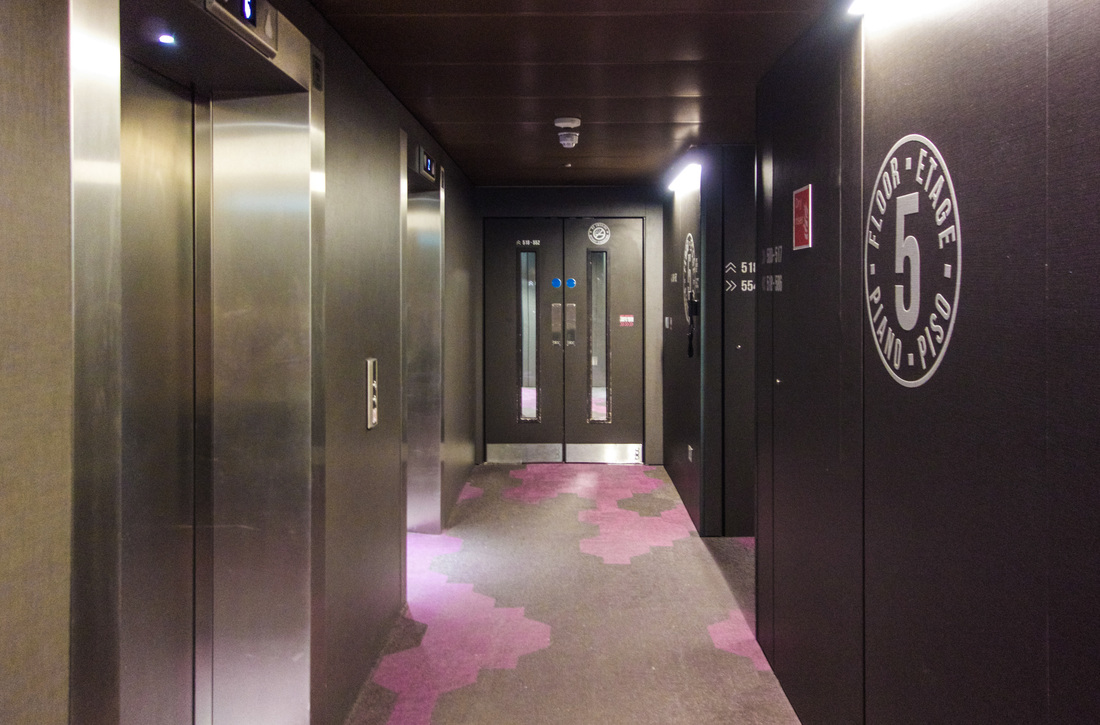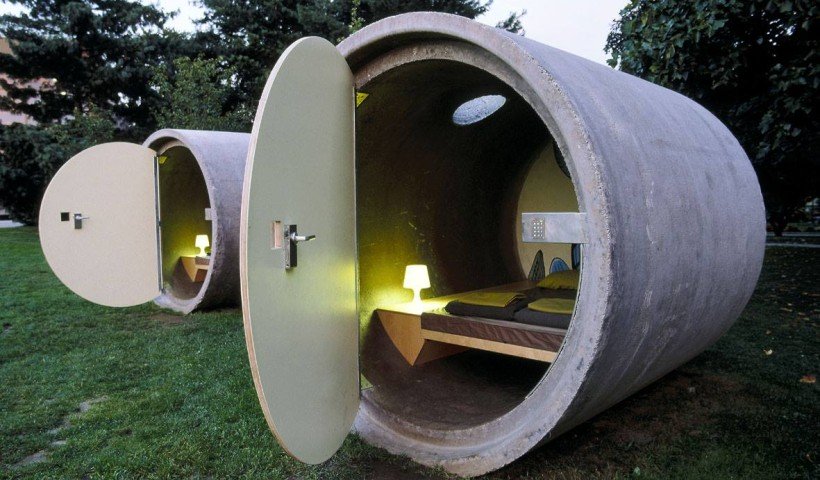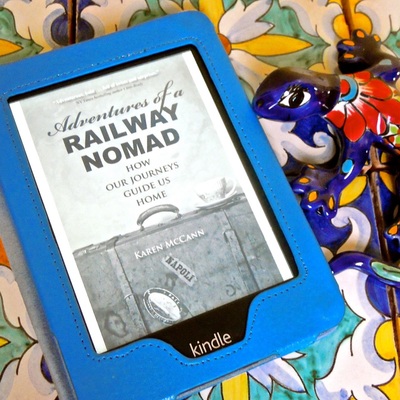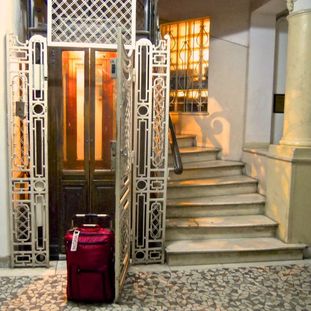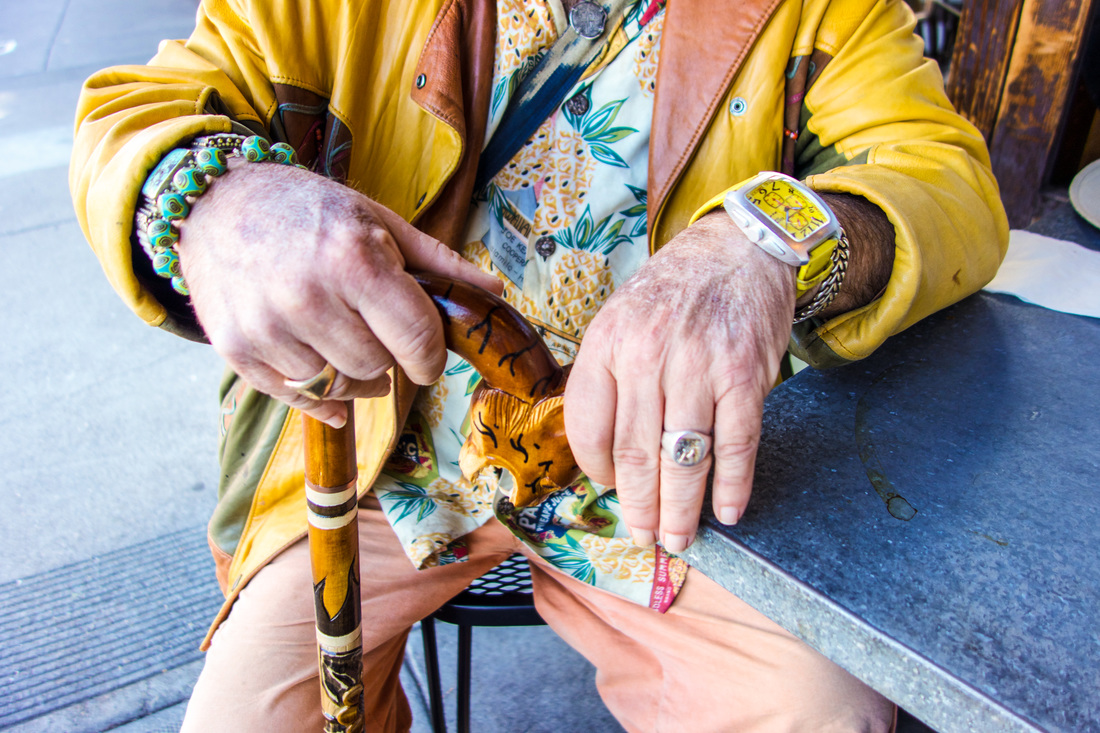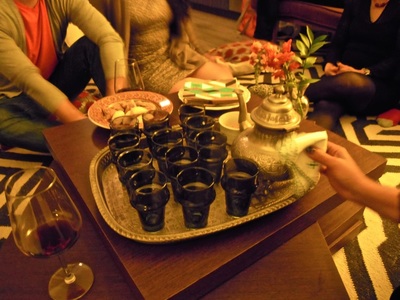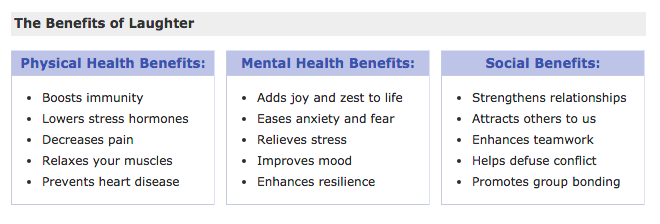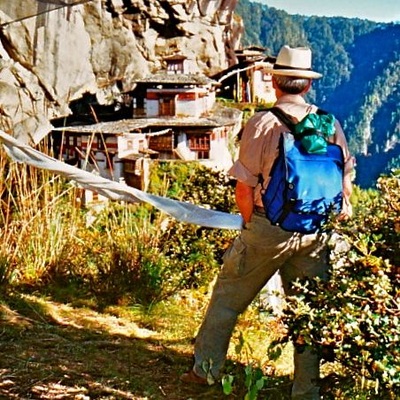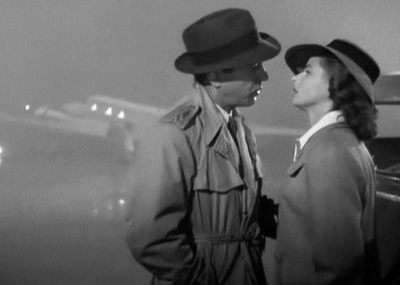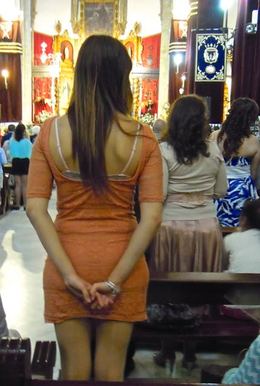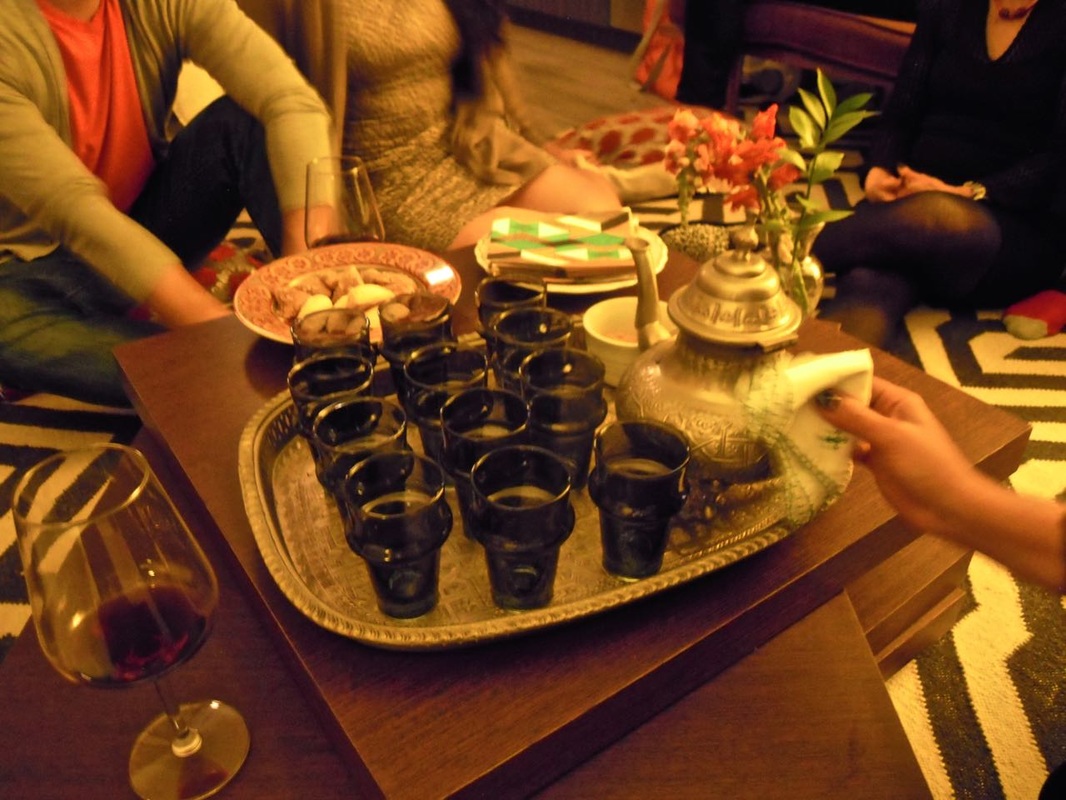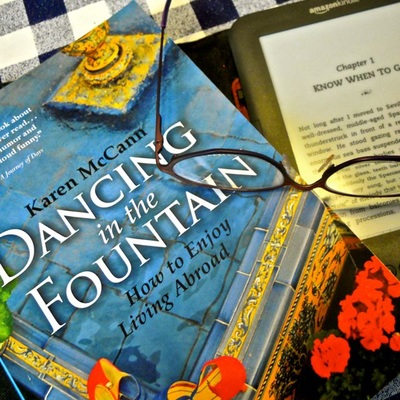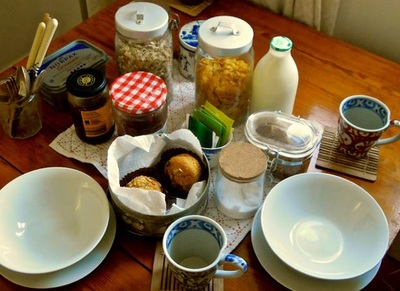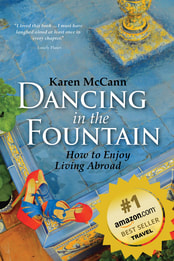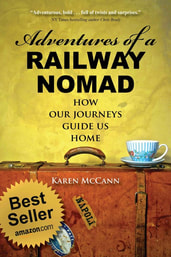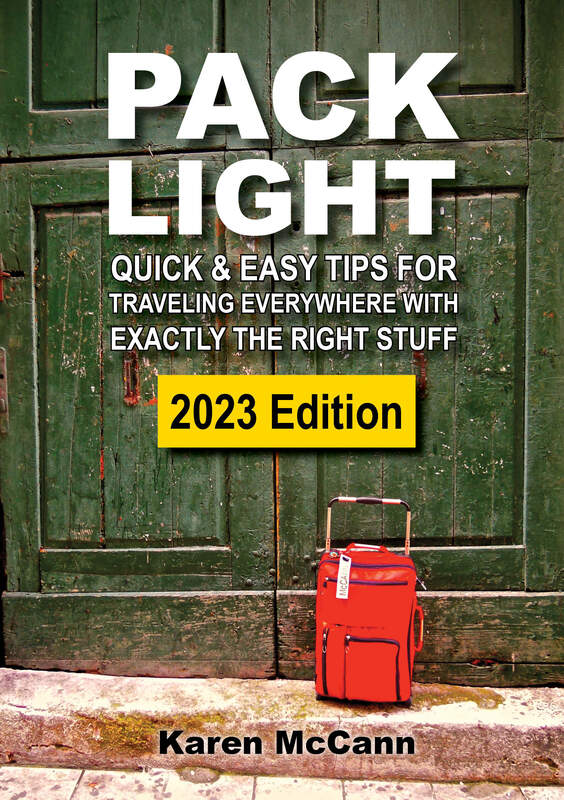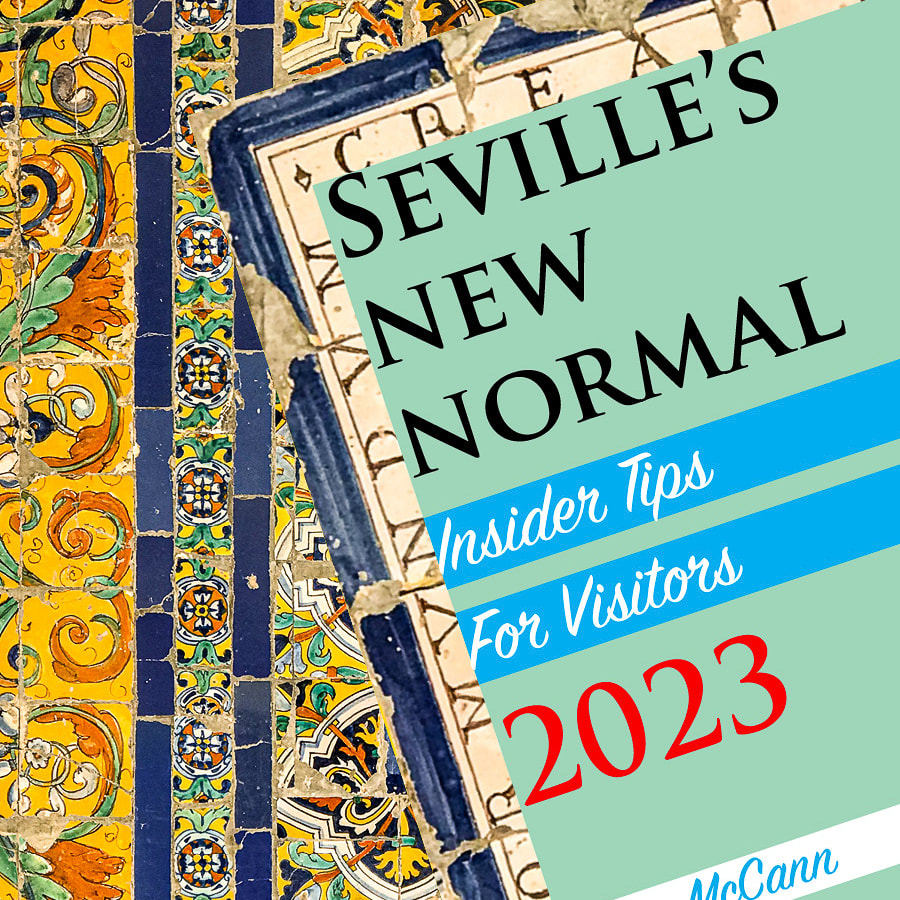|
“I’m not kidding,” Rich said. “I think this carpet is made of cardboard.” I bent down to take a closer look. “Could be some sort of plastic. Or maybe ridged asphalt covered in vinyl? Whatever it is, don’t put your bare feet on it.” We were standing at the entrance/entire floor area of the smallest hotel room I’d ever seen, in the Bloc at Gatwick Airport. With EasyJet’s only flights between London and Seville departing at the unseemly hour of 6:25 in the morning, we’d opted for the convenience of a hotel right in the airport, so we could roll out of bed and be at the gate in minutes. That sounded so good in theory. And we weren’t particularly dismayed to find the entrance to our hotel situated on a dreary concourse between the men’s and women’s restrooms. Check-in took an admirable ten seconds. In the elevator, a woman’s recorded voice – just like the one Hollywood uses to announce that you have 25 seconds until the space station blows up – calmly yet insistently repeated instructions to swipe our card in order to be carried to the appropriate floor. We arrived to discover a maze of narrow, dark, featureless corridors, like something out of a sci fi flick. The space station-style announcements continued at every turn, informing us to swipe our card at each set of doors. Naturally I expected them to part with a Star-Trek whooshing sound, but, disappointingly, we actually had to push them open with our hands when the lock released. Our room turned out to be 108-square foot (10-square-meter) cube into which they’d fitted a bed and a compact bathroom — which was designed in the “wet room” style used on trains and ships, with a partition-free shower that efficiently ensures everything in the space gets soaked at once. A tablet embedded in the wall by the bed controlled the lights, temperature, and window blinds. Yes, there was a window, which of course didn’t open, but offered a view of nearby floodlit air vents. We closed the blinds. The room felt like a coffin. “It’s a sensory deprivation tank,” said Rich, raising the blinds to half mast. “It’s like that episode of Black Mirror,” I said. “The one where in the future people live in cubicles and never see the outside world.” Looking it up online, I was astonished (aghast, even) to discover that the Bloc was far from the smallest or most dystopian hotel available. Ever wanted to sleep in a re-purposed concrete drainpipe? Me neither, but Germany’s Dasparkhotel offers this rare opportunity, which they proudly describe as “a new kind of hospitality-tool in public space.” The bed fills the cement tube; security is a metal door; toilets and showers are in shared public spaces nearby. Skinny luggage may fit under the bed; otherwise, presumably you'll be clutching it in your arms all night. Payment is voluntary; 20 euros is recommended. Possibly the tiniest and cheapest sleeping capsules on the planet are the 2.5 square meter (27 square foot) stacked cubes in the Kaiteki Hotel in Ho Chi Minh City, Vietnam. Each comes equipped with ear plugs (never a good sign) and, even more ominously, a fire extinguisher. I guess you have to bring your own anti-claustrophobia medication. Apparently the pods are separated by gender, and a Female Business Capsule will run about 179,828 dong or US $8. If you’re really worried about missing that early morning flight, some airports offer self-service Napcabs right at the gate for 10€ to 15€ per hour. One woman recorded her night in this one at gate H32 in Terminal 2 at Munich Airport. While far from luxurious, it sure beats sleeping on a chair in the departure lounge. All in all, Rich and I decided that our Bloc hotel experience wasn’t so bad. True, we paid £59 ($90) for a very, very small room, but it was four times the size of a Kaiteki Hotel pod. We didn’t have to use earplugs, put out any fires, or clutch our luggage all night. And to be fair, the bed was very comfortable and the TV was top quality. And even though we weren’t actually sleeping at our departure gate like the woman in Munich, we made our 6:25 flight with plenty of time to spare. It was convenient and good value. Use it again? God, I hope not. YOU MIGHT ALSO ENJOY
3 Comments
Right after we got married, I went down to Kmart to replace my diamond wedding ring with an inexpensive gold band. “It’s just for the duration of our trip to India,” I reassured Rich. “In a place where people have so little, it just doesn’t seem appropriate — or safe — to wear good jewelry.” “Why wear a ring at all?” he asked. “So they’ll know we’re married,” I said. “I don’t want people to think I’m cheap.” “Great. Now they’ll think I’m cheap.” Today, I no longer bother with a fake wedding ring. At my age, I’m more likely to excite admiration than censure if people think I’m engaged in amorous dalliance. But I am still conscious of the fact that people I meet on the road take one glance at my attire and make assumptions about who I am and whether they want to get to know me better. It’s human nature. In Seville and on the road, I find life is easier, more fun, and likelier to involve friendly encounters if I refrain from making certain fashion statements. 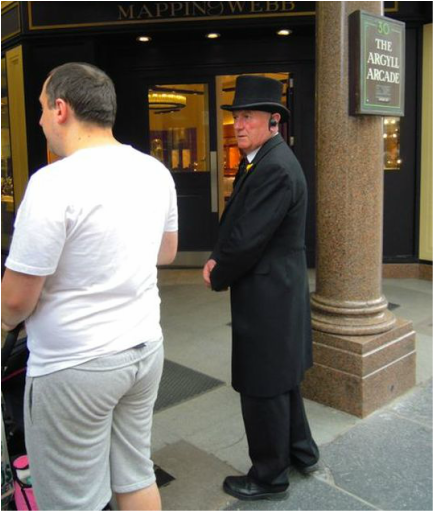 IN GLASGOW, SCOTLAND IN GLASGOW, SCOTLAND 1. Shirts with political slogans. Yes, you have a perfect right to parade around Paris in a t-shirt that reads: “Snails don’t have a backbone. French leaders eat snails. You are what you eat.” And the French have a perfect right to take offense and shun you. 2. A vest with multiple exterior pockets. Outer pockets bulging with cameras, wallets, and designer sun glasses shout, “Easy pickings! Get there first!” When shopping for a travel vest, look for one that lets you tuck away valuables discreetly in zippered compartments on in the inside. 3. Safari wear. There’s nothing wrong with a bit of khaki, but showing up in a sophisticated city like Milan or London wearing an outfit designed for big game hunting in Tanzania suggests that you are seriously out of sync with local culture. 4. Sweatpants and gym shorts. Like safari gear, workout clothes are not commonly worn on the street in many parts of the world, and people may consider them odd and inappropriate. 5. Porn star-style clothing. Appearing on the streets of a socially conservative town dressed as if you were auditioning for the lead in a remake of “Debbie Does Dallas” may force you to waste time fending off unwanted attention from strangers, including the police. 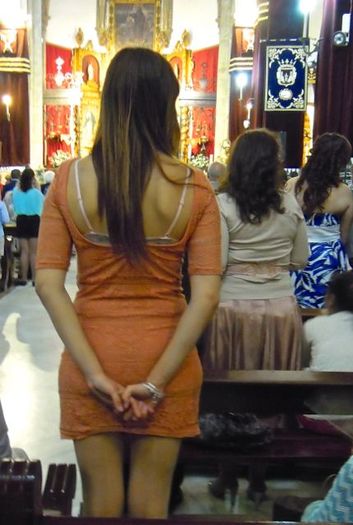 IN SEVILLE, SPAIN IN SEVILLE, SPAIN 6. Expensive jewelry. A bit of low-cost bling is fine, but flashing around serious gold and gemstones invites attention from thieves. It can also be a barrier to connecting with locals who make less in a year than you spent on your smallest nose ring. 7. Brand new shoes or hiking boots. Hobbling around with break-in blisters is never fun, but it’s a lot worse during long days of sightseeing or nights painting the town. It's painful for you and everyone who sees you. Besides, you really don’t want to have to cut short your only chance to tango in Buenos Aires because, as we Americans like to put it, “your dogs are barking.” Fashion varies wildly from place to place and year to year, so it pays to do your research. When I first arrived in Seville, no one over the age of 18 would be caught dead wearing blue jeans or sneakers; today, both are European wardrobe essentials. As a young girl I was told, “No gentleman should ever see a lady’s undergarments except for erotic purposes.” Now bra straps peek out from clothing everywhere, even in church. But friendliness is always in style, and I suspect you’ll still find it easier to enjoy yourself abroad if your wardrobe says “cheers” instead of “huh?” or “merde.” YOU MIGHT ALSO ENJOY
“I just can’t take any more close-ups of blood dripping on snow,” I told Rich recently. At home or on the road, we love spending lazy evenings watching mysteries and thrillers, matching wits with unorthodox but brilliant detectives and the ruthless master criminals they’re hunting down. But after a glut of bleak Scandinavian suspense dramas and brutal American police procedurals, I needed more lighthearted fare. A glance at the current comedy listings seemed even more demoralizing than the gritty crime shows: Hot Tub Time Machine 2, Magic Mike XXL, yet another SpongeBob sequel… “We need some classic comedy,” I decided. “The kind that really knows how to make ‘em laugh.” I placed our big green bowl in the middle of the dining room table. “We can call it The Laugher Project,” I said, rummaging around the kitchen for PostIt notes and pens. “We’ll each write the names of favorite funny films, and when we need something cheerful, we’ll pick one at random and watch it.” “I’ve got one!” Rich exclaimed. “Remember that scene—” “Wait! Don’t tell me which ones you’re putting in,” I said. “Write on the back side of the PostIt note, so we can seal it shut with the sticky part. It’ll be like a secret ballot.” A flutter of folded yellow slips began hitting the bowl. A few days later, friends arriving for dinner wondered aloud about our unusual centerpiece, and we told them about The Laughter Project. At first they seemed to think the whole exercise was distinctly odd and completely pointless. But by the second glass of wine, they were roaring as they recalled cherished movie memories, and pretty soon they were reaching for the PostIt pad and demanding more pens. By the third glass of wine, they were scrawling madly on the non-sticky side of the PostIts, crumpling them up, and flinging them into the bowl. “Those are the ones I want to start with,” I told Rich later. “You think we’re going to be able to read their handwriting?” he said doubtfully. “Maybe. Some.” Since then, many friends have contributed to The Laughter Project (and I hope you will, too). As the collection grows, it’s comforting to know that with today’s technology, we can dip into it wherever we are in the world. YouTube and public libraries offer free streaming, and for modest fees you can watch films on Netflix, Amazon Instant Video, and other sites. Although a few countries such as Cuba still have pretty shaky wifi outside of the larger hotels, most places – the Bulgarian mountain hostel we stayed in a few years ago, for instance – offer surprisingly good Internet connection. And if you think entertainment is all you’re getting from these movies, think again. Chuckles, chortles, giggles, and guffaws can relax your whole body for up to 45 minutes, boost your immune system, release endorphins that enhance well-being and reduce pain, and improve blood circulation in ways that benefit your heart. And that’s no joke.  Laughter offers us a vacation from ourselves. It lifts us up out of our ordinary lives and enables us to forget everything but the joy of being in this moment, right now, doing precisely this. Science tells us we cannot feel anxious, angry, or depressed when we laugh; instead we relax, recharge, and tend to see situations in a more realistic, less threatening light. According to a Japanese proverb, "Time spent laughing is time spent with the gods." And Woody Allen sums it up thus: “I am grateful for laughter, except when milk comes out of my nose.” What movies have tickled your funny bone? I’m still collecting the names of films to add to The Laughter Project, and I’d love to include your favorites! YOU MIGHT ALSO ENJOY “Why would you want to go to a stranger’s home and eat with people you don’t know?” a friend asked incredulously. “The hosts aren’t picked at random off the street,” I protested. “They’re professional chefs and fabulous cooks who open their homes to small groups for private dining. It’s a pop-up restaurant, like a small supper club.” “Yes, but you all sit together. There’s no telling who would be next to you.” “That’s the fun part!” My friend just rolled her eyes. Wherever we go, Rich and I are always looking for ways to get deeper into the local culture, and we were delighted to discover that EatWith has host chefs in more than 150 cities around the world. In Seville, we’d loved their cooking class/paella lunch in the historic Triana Market. In San Francisco, we chose Laila’s Culinary Journey to Morocco, and persuaded two intrepid friends, Kathryn and Peter, to join us. We met Laila and her Russian boyfriend, Mark, on the rooftop terrace of a high rise overlooking Twitter’s world headquarters and a large swath of San Francisco. Laila told us she came from a Moroccan Burber family by way of New York City. “In Morocco,” she said, “a guest is a gift. And in the Burber tradition, we always start with Medjul dates for luck.” Nibbling on dates and slices of baguette topped with ricotta and Moroccan honey (“from stingless bees,” Laila said), we introduced ourselves. We were talking about EatWith, one of the most successful entries in the hot, new peer-to-peer shared economy: private dining experiences. You go online to see what’s available in your city – or one you’ll be visiting – checking out menus, costs, reviews, and availability. The number of guests is usually eight to twelve, depending on the size of the host’s dinner table. As with restaurants, the prices vary widely according to geographic region. You book online, pay in advance, and never have to worry about tips or hidden extras. “This is our sixth EatWith dinner,” confided a retired physician. “My wife and I just got tired of eating in restaurants.” When he mentioned he wanted to visit the pandas in China, a young Asian woman exclaimed, “I was just there! And I was so disappointed. They just stopped letting the tourists cuddle the baby pandas.” (I refrained from blurting out, “They were letting random people hold endangered baby animals with large teeth and claws? And no one thought that was a bad idea until now?”) A tall young man named Paul seemed reticent to talk about himself, but I soon wormed his secret out of him: he’s a chef working for EatWith and was supposed to remain incognito while doing a routine review of the hosts. I peppered him with questions, including how the company manages quality control with such a diversity of venues. For one thing, he explained, guests are asked to rate their experience using a five-star system like Amazon’s. “If a host’s rating slips below 4.5 stars, we immediately look into it,” he said. 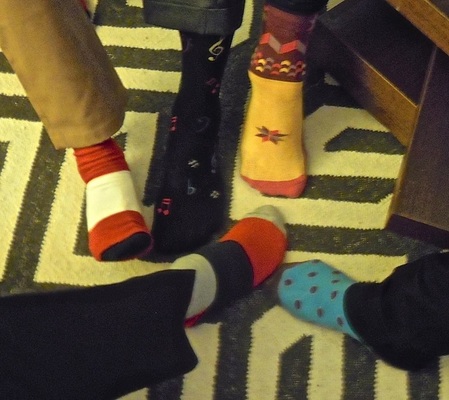 That's Rich, looking dapper in the brown trousers and red and white socks. That's Rich, looking dapper in the brown trousers and red and white socks. After detouring to admire the building’s fire pit, we wound up at a long table in Leila and Mark’s kitchen. Laila served us slices of moist, rich bastilla, a sweet-savory chicken pie dusted with cinnamon and sugar. It’s a popular dish in Seville, where everyone tells you it was traditionally made from pigeon until finicky modern standards forced them to switch. Leila described how she sourced the chicken and other fresh, organic ingredients from a local farmer’s market and imported spices from her favorite souk in Agadir, Morocco. Tagines appeared filled with perfectly baked salmon laid tenderly over chermoula pepper sauce. After a dessert of strawberries and grapes infused with rose water, we moved to the living room for fresh mint tea and traditional honey cookies. The talk flowed on, from food to travel to technology to footwear; we had been warned in advance this was a shoe-free apartment, and the men rose to the occasion with particularly festive socks. It was my kind of evening. And one of the best things about it was knowing I could arrange similar dinners just about anywhere in the world via EatWith and others such as VizEat, Bonappetour, Plate Culture, Feastly, HomeFood, and Eat with a Local. Thinking about trying it? As with all sharing economy experiences, you’ll want to read reviews very carefully. Make sure the menu appeals, find out if any special dietary needs can be met (yes, some provide gluten-free fare), and if abroad, check what languages are spoken by the hosts. Go with a friend, preferably several, if you can; it’s more fun and you’ll feel more relaxed. As with conventional restaurants, you may not find every meal to be a life-changing experience, but you can be sure you’ll have plenty to talk about afterwards. Unlike some of my better-organized and more practical blogger friends, I don't accept sponsorships of any kind. EatWith and other shared dining websites are mentioned here because I thought you might find them interesting. I haven't tried any of the others yet; if you have, I'd love to hear about your experiences. YOU MIGHT ALSO ENJOY |
This blog is a promotion-free zone.
As my regular readers know, I never get free or discounted goods or services for mentioning anything on this blog (or anywhere else). I only write about things I find interesting and/or useful. I'm an American travel writer living in California and Seville, Spain. I travel the world seeking eccentric people, quirky places, and outrageously delicious food so I can have the fun of writing about them here.
My current project is OUT TO LUNCH IN SAN FRANCISCO. Don't miss out! SIGN UP HERE to be notified when I publish new posts. Planning a trip?
Use the search box below to find out about other places I've written about. Winner of the 2023 Firebird Book Award for Travel
#1 Amazon Bestseller in Tourist Destinations, Travel Tips, Gastronomy Essays, and Senior Travel
BLOG ARCHIVES
July 2024
CATEGORIES
All
|
